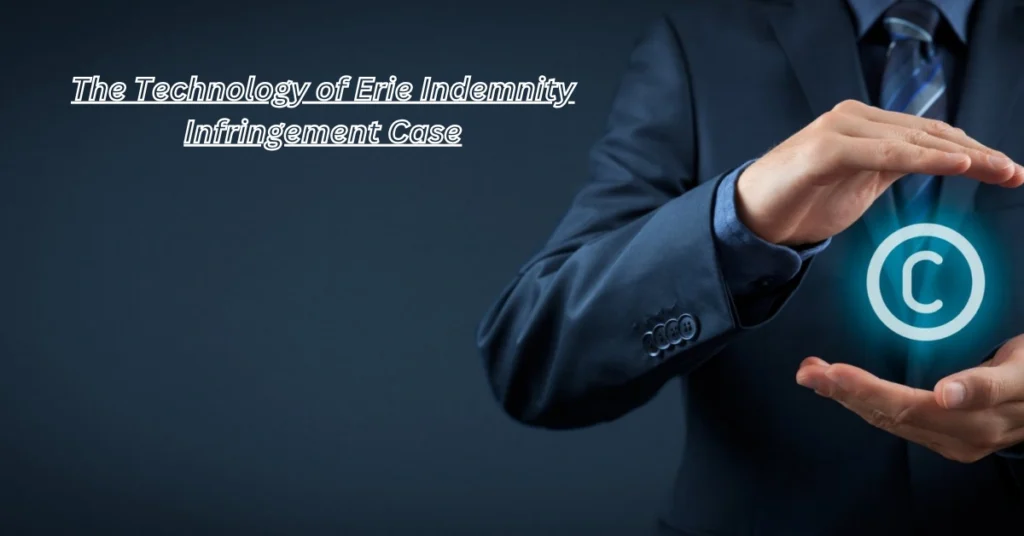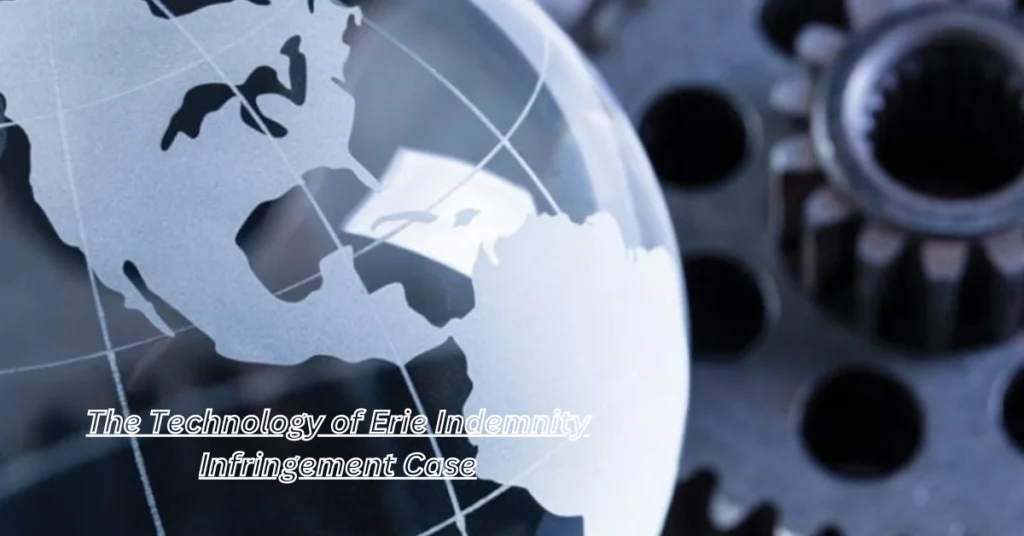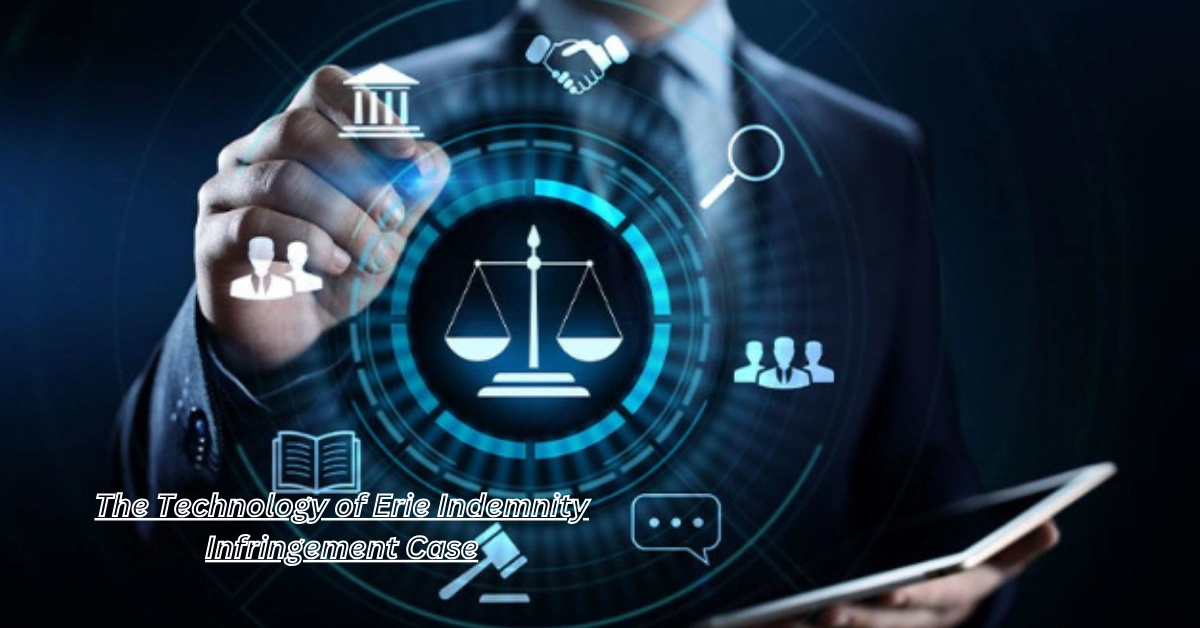In today’s fast-evolving tech world, the technology of Erie Indemnity infringement case presents a key example of how technology and intellectual property (IP) intersect. The case serves as an important reminder of the need for businesses to understand and protect their technological innovations. This article will delve into the technology of Erie Indemnity infringement case, providing readers with valuable insights into the legal complexities, technologies involved, and practical strategies for IP protection.
What Is the Erie Indemnity Infringement Case?

The technology of Erie Indemnity infringement case revolves around allegations of patent infringement, where Erie Indemnity, a company operating in the insurance sector, was accused of using patented technologies without proper authorization. This case is significant because it highlights how companies in various sectors, including insurance, finance, and technology, must protect their intellectual property from unauthorized use.
The crux of the issue lies in the technology that was allegedly used without permission, raising questions about patent rights, legal boundaries, and the consequences of infringement.
How Technology Plays a Role in Erie Indemnity’s Case
At the heart of the technology of Erie Indemnity infringement case are cutting-edge technologies related to the insurance industry. These include the use of:
- Software algorithms: Insurance companies are increasingly relying on complex algorithms for data analysis and customer service automation.
- Data encryption technologies: Securing sensitive customer information is crucial in digital insurance services.
- Cloud computing: Many insurance companies use cloud infrastructure for large-scale data processing and storage, leading to potential conflicts over patented technologies.
In this case, the technological innovations allegedly used without permission were central to Erie Indemnity’s operational success. The technology of Erie Indemnity infringement case highlights the importance of ensuring that businesses use only legally authorized technologies to avoid costly litigation.
Understanding Intellectual Property Rights and Infringement

To better understand the technology of Erie Indemnity infringement case, it’s essential to grasp the basic concepts of intellectual property (IP) and patent infringement.
What is Patent Infringement?
Patent infringement occurs when a company or individual uses patented technology without the permission of the patent holder. In the technology of Erie Indemnity infringement case, Erie Indemnity allegedly utilized patented technology related to insurance automation and data processing without proper licensing, leading to the infringement claim.
Types of Intellectual Property
- Patents: Protect inventions, technological processes, or systems.
- Trademarks: Protect logos, brand names, and slogans.
- Copyrights: Safeguard creative works like software and written content.
- Trade secrets: Protect confidential business information.
In the case of Erie Indemnity, the focus is on patents, which are crucial for protecting technological innovations.
The Legal Implications of the Erie Indemnity Infringement Case
The legal ramifications of the technology of Erie Indemnity infringement case are significant. When a company is accused of patent infringement, the legal process involves determining whether the accused technology indeed violates an existing patent. The legal framework includes several stages:
- Pre-Litigation: Identifying potential patent infringement issues and addressing them through negotiations or licensing agreements.
- Litigation: If no resolution is reached, a lawsuit is filed, where the court assesses the validity of the patent and whether infringement has occurred.
- Post-Litigation: If infringement is proven, the defendant may be ordered to pay damages, stop using the patented technology, and may even face a public injunction.
In the technology of Erie Indemnity infringement case, the outcome could affect not only Erie Indemnity but also the larger tech and insurance industries, setting a precedent for future patent disputes.
How Businesses Can Avoid Patent Infringement

To avoid the pitfalls illustrated by the technology of Erie Indemnity infringement case, businesses should take proactive steps to protect their technologies and minimize the risk of patent infringement:
1. Conduct Comprehensive Patent Searches
Before adopting or developing new technology, perform a thorough patent search to ensure you’re not infringing on existing patents.
2. Secure Your IP
Invest in securing patents for your own technological innovations. Working with intellectual property lawyers ensures your innovations are legally protected.
3. Licensing Agreements
If your business relies on third-party technologies, negotiate licensing agreements to avoid unauthorized use.
4. Implement Robust Security Measures
Use encryption and other security technologies to protect your business’s trade secrets and proprietary software from being copied or stolen.
FAQ: Common Questions about the Erie Indemnity Infringement Case
Q1: What is the primary issue in the Erie Indemnity infringement case?
The primary issue is the alleged use of patented technology by Erie Indemnity without proper authorization. The case centers on patent infringement claims related to technologies used in the insurance industry.
Q2: How can a business avoid technology infringement?
Businesses can avoid technology infringement by conducting thorough patent searches, securing their own patents, negotiating licensing agreements, and ensuring that they implement robust security measures to protect proprietary information.
Q3: What are the consequences of patent infringement?
Patent infringement can result in financial damages, including the payment of royalties or fines, and may also lead to a court injunction requiring the infringing company to stop using the patented technology.
Q4: Can a patent be invalidated during a lawsuit?
Yes, a defendant can challenge the validity of a patent during a lawsuit. If the court finds that the patent is not novel or is already covered by prior art, it can rule the patent invalid.
Conclusion: Protecting Innovation in the Age of Technology
The technology of Erie Indemnity infringement case underscores the importance of intellectual property protection in an increasingly tech-driven world. As businesses integrate advanced technologies into their operations, safeguarding innovations through patents, trademarks, and copyrights becomes essential. Legal disputes like the Erie Indemnity case emphasize the need for companies to be diligent about respecting intellectual property laws and ensuring their technologies are used lawfully.
By adhering to best practices for IP protection, businesses can avoid legal entanglements, protect their innovations, and continue to thrive in today’s competitive marketplace. The technology of Erie Indemnity infringement case is a reminder of the critical role IP plays in securing a company’s technological future.
Discover how technology can enhance early literacy by reading our discussion thread on early reading and writing support.
